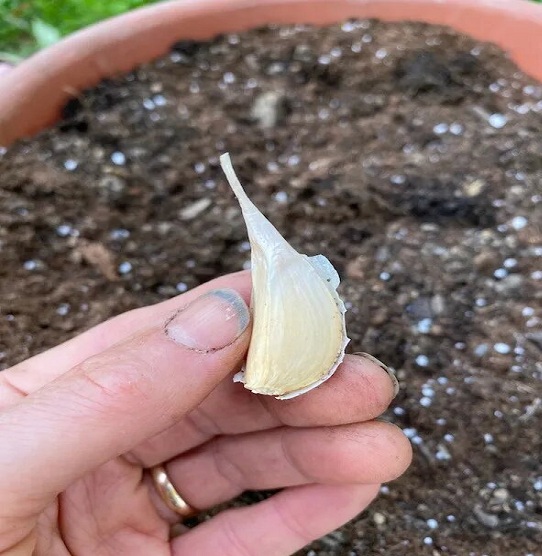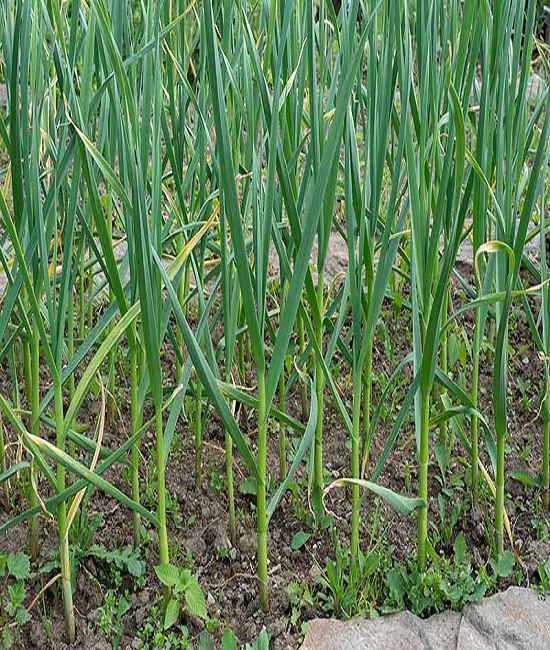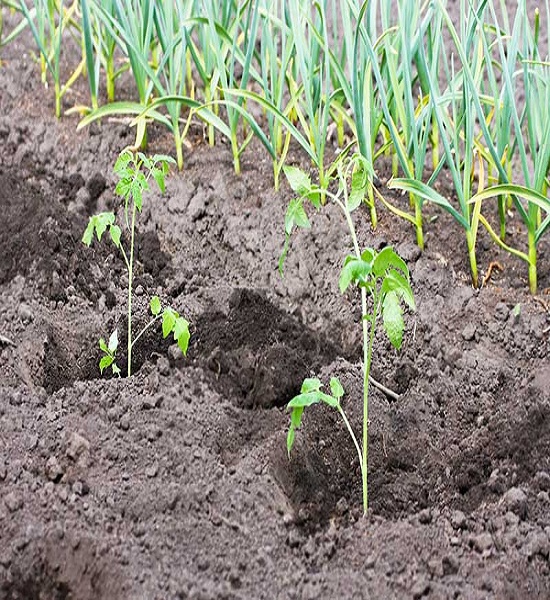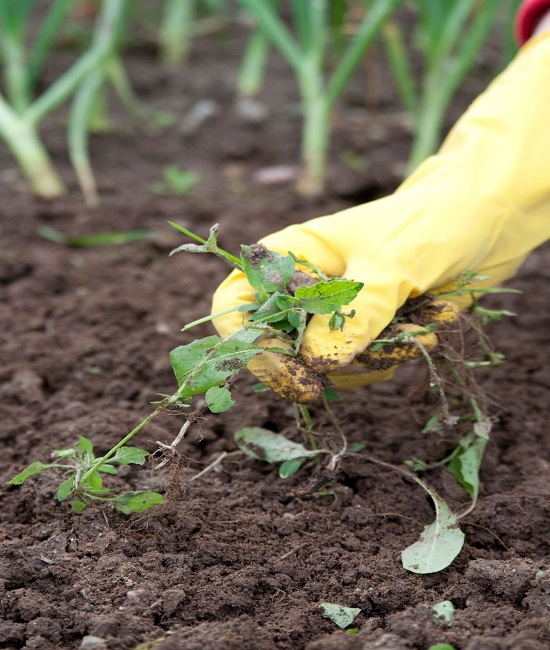Without garlic, a kitchen wouldn’t be complete. As a result, many people desire to learn how to cultivate this delicious bulb themselves. Growing a lot of garlic for a healthy crop doesn’t need much experience, so even novice gardeners may get the benefits.
Try these tips if you’re interested in increasing your garlic harvest.
Start new plants from food scraps
Let’s begin with the method that many gardeners use to plant their first garlic cloves. While garlic seeds can be purchased, the much more usual method involves getting a single clove to sprout.
You can do this by soaking the clove’s lower half in water before planting to stimulate root growth, or you can simply plant the cloves in the ground and water them thoroughly for a week.
This strategy is helpful if you only have a few plants, as it allows you to quickly multiply your garden’s plant population with minimal further financial investment. For generations, households have used unused cloves to germinate seeds and grow new plants.
The actual shape will depend on your climate, the soil, the amount of water, and the amount of sunlight the plant gets.

Harvest the garlic greens
Use twice as much garlic green as you would “regular” garlic when cooking. Despite having greater fiber, garlic greens have a far more subtle flavor. They can be harvested repeatedly without causing the plant any harm because they regrow after a week or two.
However, keep in mind that taking the garlic greens will delay the bulb’s maturation. Photosynthesis, which produces sugars for the plant to eat, occurs in the leafy greens.
When greens are harvested, the plant must redirect its resources into producing new leaves. If the bulb is already rather large, removing too many leaves could be fatal to the plant.
Because of this, it is generally advised that no more than 10% of the plant’s greenery be harvested at any given time.

Give your plants enough space
Seeds and starts may look like they can be planted close together, but at least four inches of distance is needed for them to grow properly. Plants can survive with spacing as little as three inches apart, but much less and they will struggle to acquire adequate water and nutrients.
Nonetheless, if you want to maximize your garlic harvest, you should allow each garlic plant at least eight inches of separation from its neighbors. The bulbs will have plenty of room to multiply and flourish in this setting.

Adjust your fertilizer
Growing garlic can be a drain on soil resources due to the plant’s lengthy maturation time. Soil quality and regular applications of compost or fertilizer to replenish nutrients are essential for healthy plant growth, so keep that in mind when you plant.
Garlic cloves thrive when planted in rich soil that has either been amended with compost or is composted before planting. Always go for a more neutral pH soil and steer clear of severely acidic or alkaline soil. Have your soil tested and utilize a chemical fertilizer that has been formulated for your specific soil type.
Compost should be added to soil or fertilizer every two months. Overfertilization can cause the garlic bulbs to shrivel and even burn.
Because garlic consumes all of the nutrients in the soil, underfertilization is a much more common issue. However, because it grows so slowly, a lack of nutrients usually only causes the plant to go dormant instead of dying.

Take into account what is growing surrounding your garlic
Garlic is so effective in deterring garden pests that many gardeners choose to put it among their other plants rather than in a separate row. Consequently, garlic must frequently contend with other foods, such as vegetables, herbs, and fruits, for the limited supply of nutrients available.
Garlic won’t do well if planted next to a plant that consumes a lot of soil nutrients. However, it does well when planted next to a crop that fixes nitrogen in the soil, like peanuts.
If you truly want to plant garlic next to a “needy” plant, such as corn or tomatoes, make sure to regularly mix in fertilizer or compost.

Adjust your water
Soil that is overly wet can cause the garlic bulbs to rot, although water is essential for garlic growth. Don’t let the soil dry out completely, but don’t let water pool either. Garlic likes a nice, somewhat damp environment.
The plants need your attention as well. The top of the plant will turn brown if the soil does not get enough water. Pay special attention to the plants surrounding the garlic. Planting it close to a “thirsty” crop, like tomatoes, can reduce its production.
All that water will be used up by the tomatoes, and it will be difficult to add more water specifically for the garlic because of the tomatoes’ need for consistently damp soil. The garlic usually ends up being smaller as a result.
Since garlic can deter pests, it could be useful to store some near the tomatoes. That indicates that the only way to boost garlic yield is to plant more plants in different areas.

Keep your garlic in the shade
Garlic thrives in cool conditions. Sunlight, especially midday sun, is essential for plant growth, but too much heat will prevent bulb formation. Garlic grows best in partial shade.
Extreme heat can result from being exposed to too much sunshine. Most gardeners plant garlic as soon as the ground is no longer frozen, but those who live in warmer climates have a more difficult time deciding the optimal planting period.
As a result, their garlic plants suffer from overexposure to the sun due to an inaccurate estimation of the crop’s development time. Thankfully, garlic can withstand high temperatures with relative ease. However, if the shoots are subjected to excessive heat, they will be scorched, resulting in the plant’s eventual death.
The good news is that this is simple to correct. Just give the plant a little more shade, and it’ll be fine.

Weed your garlic as it grows
Even if you don’t notice many weeds growing above ground, they may nevertheless be choking down your garlic crop. Garlic bulbs can’t get enough room to grow if they’re smothered by weeds with intricate root systems. When pulling up weeds, make sure to get all of the roots as well as the plants themselves.


